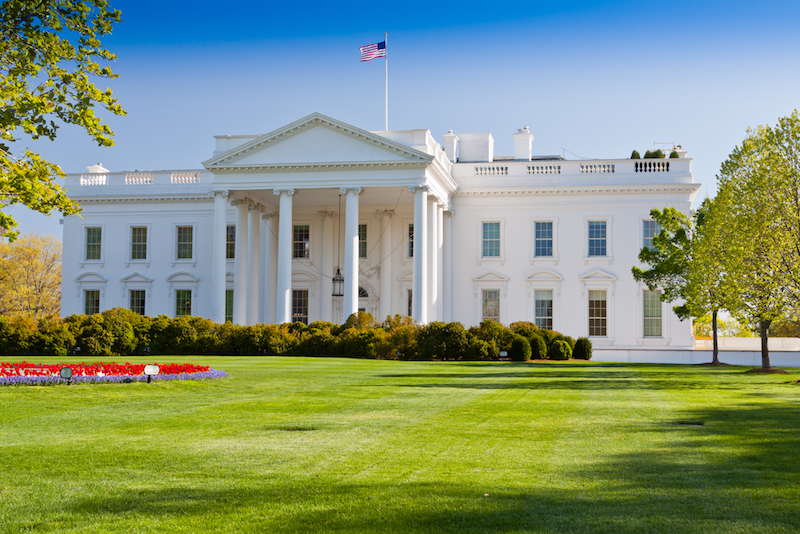
President Trump’s claims that deregulation has greatly helped the economy are exaggerated.
Last month, the Trump Administration published its semi-annual Unified Agenda of Regulatory and Deregulatory Actions. Many aspects of the agenda received attention but none more than the claims that the Trump Administration has succeeded in an unprecedented degree of deregulation. President Donald J. Trump himself routinely cites his deregulatory accomplishments as a cause for the strong economy in his first two years in office.
But these claims of both extensive deregulation and a major impact on the economy weaken considerably upon closer scrutiny.
This is the second annual public announcement that the Trump Administration has made on the extent of deregulation. In last year’s highly touted event, President Trump claimed to have eliminated 22 regulations for every new regulation his Administration issued. That claim has been fairly thoroughly debunked, as many of the deregulatory actions were not completed or were very trivial.
How do the claims in this year’s report stack up? The Trump Administration said it had eliminated 57 regulations from October 2017 through September 2018. I examined these 57 deregulatory actions and found that less than half of them resulted in measurable cost savings. Eleven of the 57 actions were delays in the effective date of regulations issued late in the Obama Administration. It is unclear whether these regulations will eventually be repealed, and the Trump Administration has largely failed in court when its regulatory delays have been challenged.
An additional five items in the list are withdrawals of proposed rules. These actions did not eliminate regulatory requirements that were actually in effect.
That leaves 41 deregulatory actions that actually occurred. Four of these were finalizing deregulatory proposals originally put forward by the Obama Administration. Although the Trump Administration should get some credit for these actions—which generated only negligible cost savings—it is disingenuous to include them in a total designed to give the impression of a change in direction in regulatory policy.
Of the remaining 37 actions, the Trump Administration either fails to estimate cost savings or acknowledges, in the preambles to the final regulations, that the costs savings are negligible in 15 of them. One of the remaining deregulatory actions is a significant change allowing insurance companies to market “short-term, limited-duration insurance” under the Affordable Care Act. The Trump Administration did not quantify the costs savings in this regulation, but instead stated that both costs and benefits were qualitative and difficult to calculate.
This leaves 21 meaningful deregulatory actions for which the Trump Administration was able to quantify cost savings. The majority of these are from the U.S. Department of Health and Human Services and they reduce paperwork requirements on hospitals and medical providers. Observers should not minimize the importance of reducing paperwork in an overly complex health care system. These are real changes and they are likely important. In fact, these 21 regulations appear to be very comparable to the types of deregulatory actions taken by the Obama Administration under its program of retrospective review of existing regulations.
But it is extremely unlikely that 21 actions, plus those deregulatory actions from President Trump’s first year in office that were largely due to the use of the Congressional Review Act, have had any appreciable effect on the economy. In this past year, the deregulatory actions total an annual cost savings of $1.6 billion in an economy where the GDP is more than $20 trillion. And the cost savings are concentrated in one sector of the economy: health care.
In addition, the repeal of regulations leads to benefits forgone, not just cost savings. Given the magnitude of the regulations repealed, these forgone benefits are also likely to be quite small but their loss would still offset some of the cost savings.
And yet, the myth that deregulation has been a source of U.S. economic strength has already taken hold. A Gallup poll released in October showed that the percentage of the American public that believed that there was “too much regulation” had dropped to 39 percent from an average of 48 percent over the course of the Obama Administration. This drop happened despite the fact that little deregulation has actually occurred during the Trump Administration.
The drop in the percentage of people who thought that there was too much regulation comes entirely from Republicans who have adopted this belief. The percentage of Republicans who say there is too much regulation has dropped from 74 percent in 2016 to 57 percent now. Democrats actually say increasingly that there is too little regulation—42 percent, up from 34 percent during the Obama Administration.
President Trump’s repeated contention that deregulation has helped the economy, perhaps coupled with the fact that there are very few new regulations being issued, has clearly had an impact. The impact, however, has been on public perceptions, not an improved economy that can be traced to deregulatory actions. Claiming that deregulation is happening and helping business leads people—particularly those already inclined to believe it—to believe falsely that deregulation is making an economic difference.
If, or perhaps when, the economy turns downward, one has to wonder whether perceptions will change.




